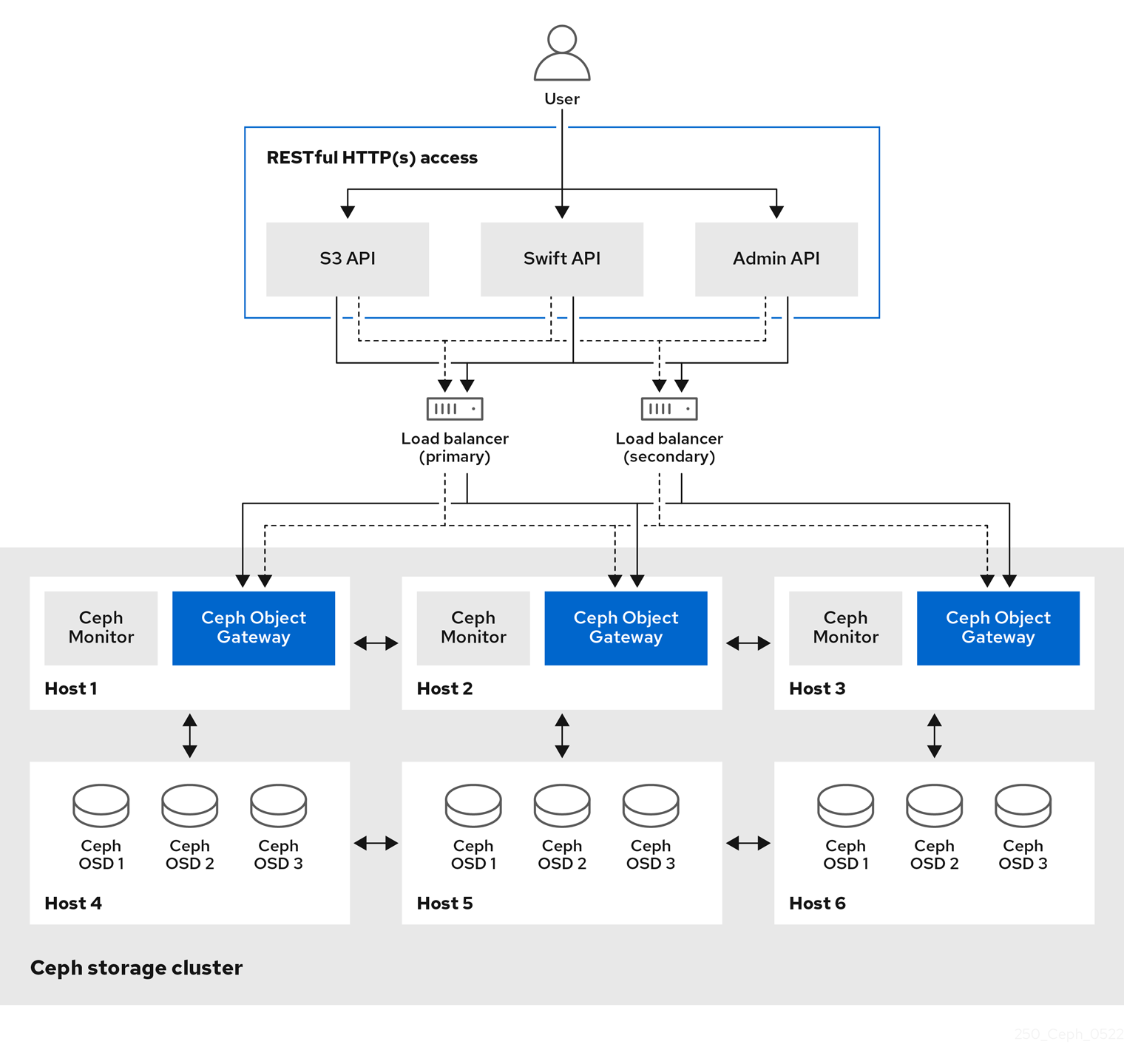Este conteúdo não está disponível no idioma selecionado.
Chapter 1. The Ceph Object Gateway
Ceph Object Gateway, also known as RADOS Gateway (RGW), is an object storage interface built on top of the librados library to provide applications with a RESTful gateway to Ceph storage clusters. Ceph Object Gateway supports three interfaces:
S3-compatibility:
Provides object storage functionality with an interface that is compatible with a large subset of the Amazon S3 RESTful API.
You can run S3 select to accelerate throughput. Users can run S3 select queries directly without a mediator. There are two S3 select workflows, one for CSV and one for Apache Parquet (Parquet), that provide S3 select operations with CSV and Parquet objects. For more details about these S3 select operations, see section S3 select operations in the Red Hat Ceph Storage Developer Guide.
Swift-compatibility:
Provides object storage functionality with an interface that is compatible with a large subset of the OpenStack Swift API.
The Ceph Object Gateway is a service interacting with a Ceph storage cluster. Since it provides interfaces compatible with OpenStack Swift and Amazon S3, the Ceph Object Gateway has its own user management system. Ceph Object Gateway can store data in the same Ceph storage cluster used to store data from Ceph block device clients; however, it would involve separate pools and likely a different CRUSH hierarchy. The S3 and Swift APIs share a common namespace, so you can write data with one API and retrieve it with the other.
Administrative API:
Provides an administrative interface for managing the Ceph Object Gateways.
Administrative API requests are done on a URI that starts with the admin resource end point. Authorization for the administrative API mimics the S3 authorization convention. Some operations require the user to have special administrative capabilities. The response type can be either XML or JSON by specifying the format option in the request, but defaults to the JSON format.
Introduction to WORM
Write-Once-Read-Many (WORM) is a secured data storage model that is used to guarantee data protection and data retrieval even in cases where objects and buckets are compromised in production zones.
In Red Hat Ceph Storage, data security is achieved through the use of S3 Object Lock with read-only capability that is used to store objects and buckets using a Write-Once-Read-Many (WORM) model, preventing them from being deleted or overwritten. They cannot be deleted even by the Red Hat Ceph Storage administrator.
S3 Object Lock provides two retention modes:
- GOVERNANCE
- COMPLIANCE
These retention modes apply different levels of protection to your objects. You can apply either retention mode to any object version that is protected by Object Lock.
In GOVERNANCE, users cannot overwrite or delete an object version or alter its lock settings unless they have special permissions. With GOVERNANCE mode, you can protect objects against deletion by most users, although you can still grant some users permission to alter the retention settings or delete the object if necessary.
In COMPLIANCE mode, a protected object version cannot be overwritten or deleted by any user. When an object is locked in COMPLIANCE mode, its retention mode cannot be changed or shortened.
